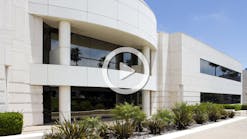Lysimeters Assess Regulatory Compliance With Recycled Water Recharge
Rapid urban growth in southern California leaves the region’s water agencies no choice but to elevate the supply of safe and reliable water as the top priority issue facing the region.
The Southern California Association of Governments reports that southern California’s population increased by more than 12% from 1990 to 2000–an influx of almost 2 million people. While southern California’s overall growth is impressive, the population of Riverside and San Bernardino Counties–collectively known as the “Inland Empire”–grew by an astonishing 26%.
The Inland Empire Utilities Agency (IEUA), the Chino Basin Watermaster, the Chino Basin Water Conservation District, and the San Bernardino County Flood District are working together to expand and improve 19 recharge basins to enhance the agencies’ ability to capture and recharge stormwater, recycled water, and imported water. These sources of water supply will be recharged into the Chino groundwater basin and will reassure the stakeholders that the region is drought-proofed to the greatest extent possible. Richard Atwater, the chief executive officer and general manager of IEUA, states, “IEUA will continue to strive to make its service area less dependent on imported water. By working together with our local retail water agencies, we will ensure that our communities continue to have high-quality, reliable water supplies with very competitive water and sewer rates.”
IEUA has spent about $75 million to date and is committed to spending another $100 million over the next three years for recharge basin enhancement and expanded recycled water projects. These projects will produce 95,000 acre-feet of new water annually, enough to meet the needs of 300,000 new residents.
Meanwhile, the Watermaster is actively implementing the basin’s Optimum Basin Management Program (OBMP), which includes extensive monitoring, further developing recharge capabilities, storage and recovery projects, managing salt loads, developing new yield such as reclaimed and stormwater recharge, and continuing to work with other agencies and entities to enhance this significant natural resource. Ken Manning, the chief executive officer of the Chino Basin Watermaster, says that “a centerpiece of the OBMP is enhancement of the basin recharge capacity, so that high-quality stormwater and available recycled water can be retained in the Chino groundwater basin.”
Basin Plan
Recharging recycled water into a potable groundwater basin required that the current basin plan be first reviewed, then evaluated, and ultimately amended. The groundwater-quality objectives for the basin also had to be raised through a rigorous methodology that was consistent with state law.
The Santa Ana Water Quality Control Plan that was in force when the project was being considered was last modified in 1995. This basin plan is adopted and administered by the Regional Water Quality Control Board, Santa Ana Region. The plan is the basis for the regional board’s regulatory programs and establishes water-quality standards for all groundwater and surface waters of the region.
The Porter-Cologne Water Quality Control Act (Division 7 of the California Water Code) and the federal Clean Water Act both mandate periodic review of these basin plans. Section 13240 of the Water Code requires that “each regional board shall formulate and adopt water quality control plans for all areas within the region. … Such plans shall be periodically reviewed and may be revised.”
During consideration of adoption of the updated basin plan, watershed stakeholders questioned the validity of the groundwater-quality objectives for total dissolved solids (TDS) and nitrate-nitrogen and the regional board’s nitrogen/TDS management plan that implemented those objectives. A principal underlying concern was that the updated basin plan constrained inappropriately wastewater recycling opportunities. Because the reuse of recycled water is a critical component of many agencies’ plans to meet rapidly increasing water demands in the region, the regional board agreed to make the review of the objectives a high triennial review priority.
The Nitrogen/TDS Task Force was formed in 1995–1996 to conduct studies regarding the TDS and nitrate-nitrogen objectives and other components of the Nitrogen/TDS management plan. The Santa Ana Watershed Project Authority coordinated the task force, which is composed of 22 water supply and wastewater agencies throughout the region. Regional board staff members were active participants in this effort. Findings and recommendations based on the task force studies were presented to the regional board at numerous public workshops during the course of the studies.
Current law and regulations guided the task force studies. The task force recommendations for changes to the TDS and nitrate-nitrogen water-quality objectives for groundwater within the region are based on consideration of factors specified in Water Code Section 13241 and the state’s antidegradation policy (SWRCB Resolution No. 68-16). The economic implications of all recommended changes to the Nitrogen/TDS management plan were also considered.
In certain groundwater basins in the watershed, the TDS and nitrate objectives were raised to allow the recharge of recycled water. IEUA had to demonstrate to the regional board that raising the objectives would be consistent with the maximum benefit to Californians, would not unreasonably affect present and anticipated beneficial use of such water, and would not result in water quality less than that prescribed in the basin plan amendments.
These amendments will ensure the reasonable protection of the beneficial uses of surface and groundwaters within the region and are consistent with the state’s antidegradation policy (SWRCB Resolution No. 68-16).
On September 8, 2004, the State Water Resources Control Board approved the basin plan amendment, which was subsequently approved by the Office of Administrative Law and the USEPA.
Lysimeters Monitor Compliance
Two California state regulatory agencies–the regional board and the State Department of Health Services (DHS)–provide oversight of the Chino Basin Recycled Water Groundwater Recharge Program. The DHS has been developing draft regulations for the recharge of recycled water. Early versions of these proposed regulations required the project proponent to drill and install monitoring wells in the recharge “mound” beneath the recharge basin to demonstrate compliance–reduction of total organic carbon and total nitrogen to concentrations specified in the permit. A groundwater mound is the local rise of the water table above its natural level resulting from a localized source, such as a recharge basin.
Representatives from the US consultancy Wildermuth Environmental Inc. (WEI) and Watermaster were quick to point out that drilling such a “mound-monitoring well” may not be feasible in the Inland Empire. Depth to the water table is typically greater than 300 feet, and the presence of interbedded lenses of fine-grained material stops the water infiltrating from the recharge basin from traveling completely vertically to the aquifer. Furthermore, the water table can fluctuate by more than 20 feet over several years, so it would be necessary to drill and install mutipiezometer or nested wells, which would increase project costs. Finally, one could not be assured that the well would provide samples representative of only the recharge mound.
Instead, WEI recommended that the DHS consider permitting the use of lysimeters to monitor compliance with the recharge permit. A lysimeter consists of a porous cup and reservoir installed in unsaturated soil that collects undiluted samples of recharge water prior to reaching the regional groundwater table. WEI installed these lysimeters directly in the bottom of the recharge basins to ensure that samples collected while the recharge basin is being operated are truly representative of the recharged water.
The lysimeter also has two tubes that run up the casing to the lysimeter head assembly. Conduits route the tubes to lysimeter head assemblies that were constructed on the top of the recharge levee.
Lysimeter sample collection procedures are straightforward. Upon installation below ground level, a vacuum is applied to the lysimeter through the tubing leading from the lysimeter to the ground surface. The negative air pressure created inside the lysimeter draws pore water into the lysimeter through the porous, stainless steel section of the lysimeter. The pore water is brought to the surface by applying positive pressure to the lysimeter through a second tube. At the surface, the pore water is collected in a collection bottle.
After months of biweekly sampling, IEUA and Watermaster found a consistent 70% to 80% reduction in total organic carbon concentrations from the recycled water at the surface to the deepest (25 feet) lysimeter due to processes related to soil-aquifer treatment. Total nitrogen concentrations from IEUA’s advanced treatment plants are extremely low and already meet permit requirements.
The nexus of the OBMP, which mandated the enhancement of Chino Basin’s recharge capacity, and the basin plan amendment, which allowed for raising the groundwater objectives to allow for the recharge of recycled water, will ensure the supply of high-quality and reliable water for the people in the region, according to Mark Wildermuth, the chief executive officer of WEI. “Moreover, this project illustrates the way in which water agencies and regulatory agencies are effectively working closely together for the betterment of the people of California,” he adds.





